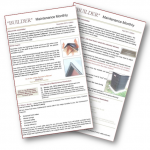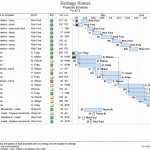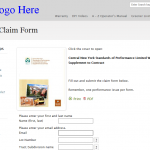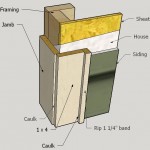Performance Standard: HBR article 15-2 Click icon to view book 
The air conditioning system should maintain a temperature of 78 degrees when the outdoor temperature is 87o (dry bulb measure).
Notes
Your air conditioning system is a whole-house system. The air conditioning unit is the mechanism that produces cooler air. The whole-house system involves everything inside your home including the air handler, duct work, resisters, drapes, blinds, and windows.
Charging the System – The outside temperature must be 65o F or higher before the contractor can add coolant and charge the system. If your home was completed during winter months, the charging of the system is unlikely to be complete and will need to be performed in the spring. Although we check and document this at final walk through, your reminder is welcome in the spring.
Homeowner Operation and Maintenance
Compressor (outside unit) – Maintain the air conditioning compressor in a level position to prevent inefficient operation and damage to the equipment.
Humidifier – If a humidifier is installed on the furnace system, turn it off when you use the air conditioning; otherwise, the additional moisture can cause a freeze-up of the cooling system.
Manufacturer’s Instructions – The manufacturer’s manual specifies maintenance for the condenser. Review and follow these points carefully. Since the air conditioning system is combined with the heating system, follow the maintenance instructions for your furnace as part of maintaining your air conditioning system.
Registers – Maximize air flow to occupied parts of your home by adjusting the floor or wall registers. When the seasons change, you may need to readjust them for comfortable heating.
Troubleshooting Tips: No Air Conditioning
Lack of air conditioning service is not an emergency. Air conditioning contractors in our region respond to air conditioning service requests during normal business hours and in the order received.
Before calling for service, check to confirm that the:
- Thermostat is set to “cool” and the temperature is set below the room temperature.
- Blower panel cover is installed correctly for the furnace blower (fan) to operate. Similar to the way a clothes dryer door operates, this panel pushes in a button that lets the fan motor know it is safe to come on. If that button is not pushed in, the furnace will not operate.
- Air conditioner and furnace breakers on the main electrical panel are on. (Remember if a breaker trips you must turn it from the tripped position to the off position before you can turn it back on.)
- 220 switch on the outside wall near the air conditioner is on.
- Switch on the side of the furnace is on.
- Fuse in furnace is good. (See manufacturer literature for size and location.)
- Filter is clean to allow air flow.
- Vents in individual rooms are open.
- Air returns are unobstructed.
- Air conditioner has not frozen from overuse.
Even if the troubleshooting tips do not identify a solution, the information you gather will be useful to the service provider you call.
Greener Living Tips
- Check the (furnace) filter at least once a month during the warm season and clean or replace it as needed.
- Use the fan setting at night when the air outside is cool, or open a window and leave the air conditioner off. Keep windows closed whenever the air conditioner is on.
- Use the air conditioner’s timer and set it to turn on no more than 30 minutes before you expect to return home.
- The lower you set your temperature, the more it will cost. For example, a 75° setting will cost about 18 percent more than a 78° setting.
BUILDER Limited Warranty Guidelines
The performance standard will be met. Lower temperature settings are often possible, but neither the manufacturer nor BUILDER guarantee this.
The air conditioning compressor (outside) must be in a level position to operate effectively. If the compressor settles during the warranty period, BUILDER will adjust it.










